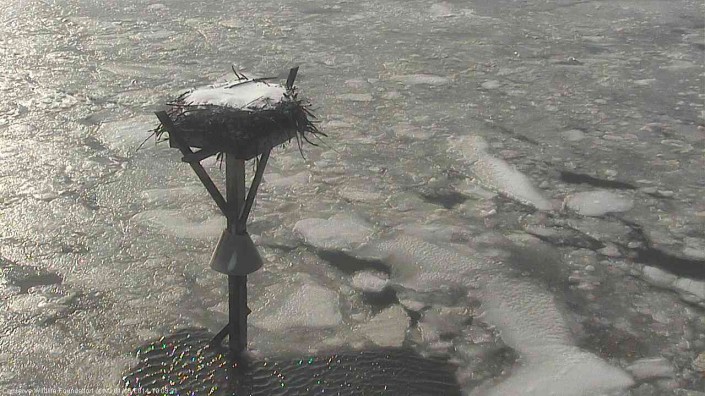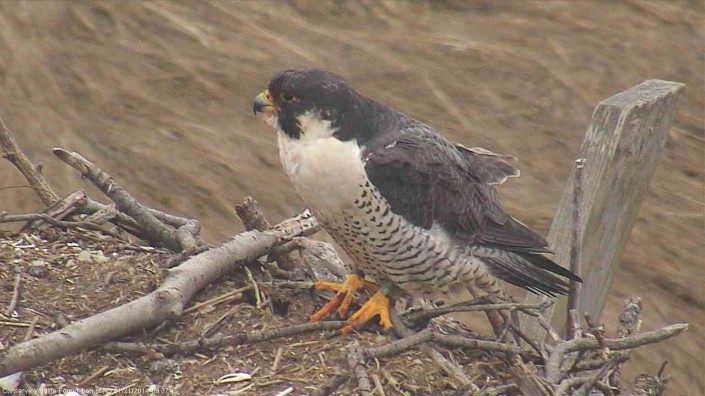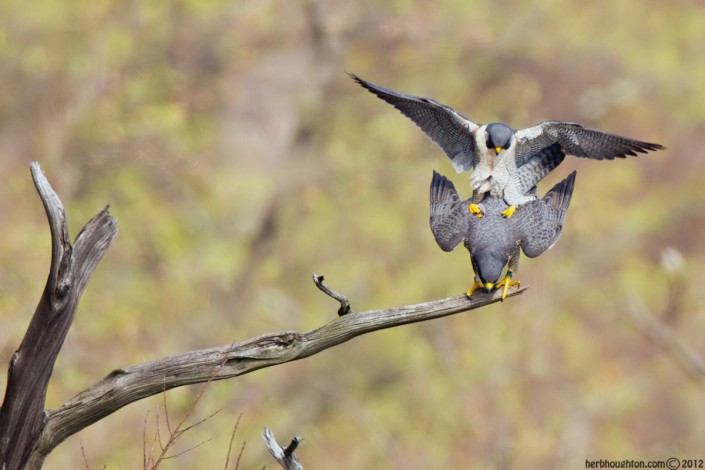This Week, Play in New Jersey’s Super Bowl…of Wildlife

This Sunday, for the first time ever, New Jersey will host the Super Bowl. Millions await the drama between two evenly matched high-flying teams.
You mean the Seahawks versus Broncos in the NFL Super Bowl?
Guess again.
Try the Falcons versus Eagles in the CWF Super Bowl!
As in peregrine falcons, the fastest animal on earth, against the bald eagles, the symbol of All-American grandeur. These two “teams” have overcome incredible odds to make it to the biggest stage imaginable: the Conserve Wildlife Foundation of New Jersey (CWF) battle for the first annual state wildlife championship. The winner will be announced on Monday morning, after a week of Facebook “likes” and donations in favor of the Falcons, or of the Eagles.
All donations will help support CWF’s work on that species, with falcon support dedicated to our Jersey City webcam program and eagle support helping our statewide stewardship work. At stake is not the NFL’s Lombardi Trophy, but an extra boost in CWF’s efforts to protect one of these imperiled species and ensure its inspiring recovery continues.
Surviving the Regular Season
How did these CWF champions make it this far? From their home stadium in downtown Jersey City (and 23 other nests across New Jersey), the Falcons have soared through the season in a continued recovery from decades of struggle against opponents like DDT and pollution. The Falcons then entered the CWF playoffs with momentum, defeating the Bobcats, Terrapins, Ravens, and Fishhawks (ospreys) in succession to reach this big stage.
Their opponent, the Eagles, play the majority of their home games on the windswept Delaware Bayshore, but also play at 118 other nests across the state. Like the Falcons, the Eagles had decades with seemingly no hope because of DDT and a rapidly changing landscape. Yet the Eagles bounced back with an inspiring few seasons, capped by victories over the Bog Turtles, Plovers, Tigers (salamanders), and Dolphins.
Among the teams that continued struggling this season were the Rattlers, the Bats, the Tree Frogs, the Skippers (butterflies), and the Goldenwings (warblers). Conversely, the Seals and Snowy Owls had strong winter seasons. Two closely rivaled teams, the Red Knots and the Horseshoe Crabs, overcame the loss of their stadium to Hurricane Sandy with a newly built New Jersey home that greatly improved their odds of success.
Now that the game is on – what are the rules for the CWF Super Bowl?
Do you win, too, if you support the winning team?
All supporters of the winning team will be eligible for a drawing to join a banding of the winning raptor this summer, with eligibility weighted by donations and points – the greater the donation or support, the greater your chance of winning! But EVERYONE is eligible, even for as simple as a Facebook like!
As for you non-football fans out there…just as the NFL Super Bowl attracts attention far beyond regular football fanatics, our CWF Championship is meaningful to all of us who care about imperiled wildlife in New Jersey. Here is a chance to ensure that a magnificent raptor – a bald eagle or a peregrine falcon – continues to grace New Jersey’s skies. Either way, score a win for New Jersey’s wildlife!
So consider this the opening kickoff! Getting out on the field is as easy as clicking a link in this email – but choose wisely. The champion awaits!




































